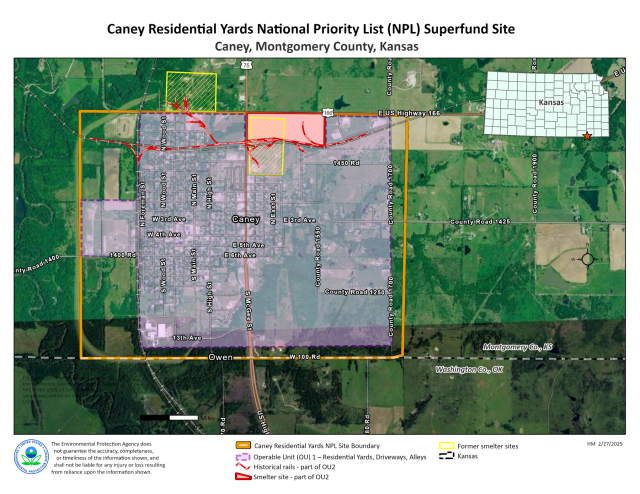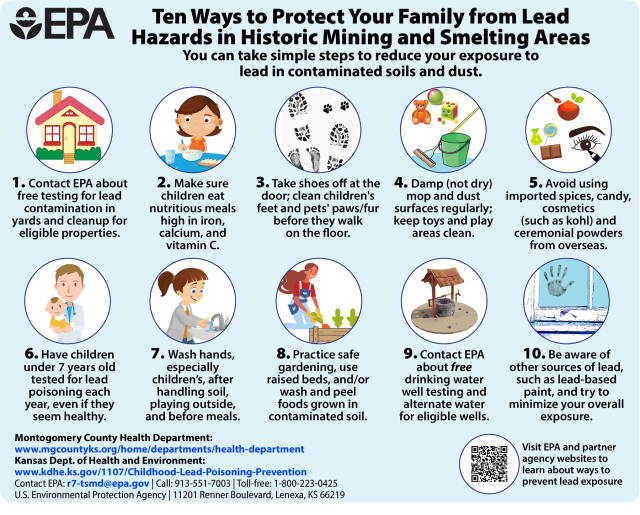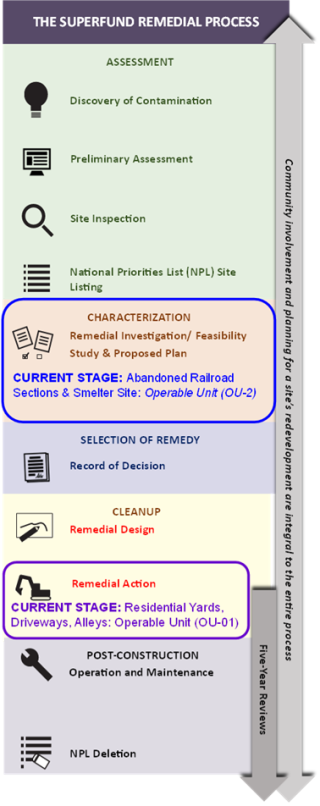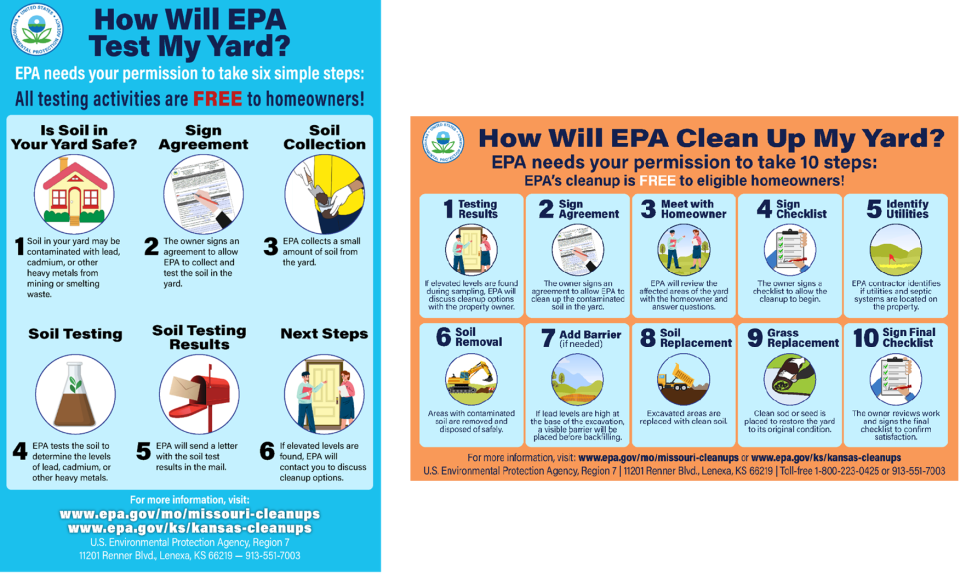Caney Residential Yards National Priorities List (NPL) Superfund Site, Caney, Montgomery County, Kansas – Fact Sheet, May 2025
Residential Yard Testing and Cleanup Opportunity
Remedial Action Site Update

Why Is EPA Cleaning Up Yards in Caney?
The U.S. Environmental Protection Agency (EPA) Region 7 is cleaning up (remediating) hazardous wastes found in residential yards and child high-use areas in Caney to protect human health and the environment.
Lead contamination was found throughout the city from historic lead and zinc smelting activities in the area. Smelter waste and emissions contaminated city properties. To protect the community from lead poisoning, EPA is conducting this remedial action under the Caney Residential Yards National Priorities List (NPL) Superfund Site (site).
The Caney site was added to EPA’s NPL in 2020. The NPL includes hazardous waste sites in the U.S. that are eligible for long-term remedial cleanup under the federal, EPA Superfund program.
Remedial Action Update
So far, 1,041 Caney residents have signed up for EPA’s lead testing program, and testing (sampling) has been conducted accordingly. Additionally, over 400 Caney residents have granted EPA access to remediate lead-contaminated areas of their yards.
In 2022, EPA updated the site-specific cleanup level, adding additional areas with lead contamination at or above 200 parts per million (ppm) of lead in soil. Owners of yards that were previously ineligible for cleanup can contact EPA to participate (including yards between 200 and 400 ppm). EPA needs permission from property owners to test and clean up; contact EPA today to participate (see contacts in upper corner on right). Under this current remedial action, residential soil lead testing and remediation/cleanup are at no cost.

Why Prevent Lead Exposure?
Lead is the main contaminant of concern. Lead is a toxic metal that is harmful if inhaled or swallowed. Lead affects multiple body systems and is particularly harmful to children under 7 years old (as their brains and nervous systems are still developing), as well as pregnant women and nursing mothers; learn more on Page 2. Prevent exposure to contaminated smelter wastes to prevent lead poisoning.
How Can I Sign up for Yard Testing? |
|---|
| Contact EPA or our contactors today! If EPA has not tested your yard (or child high-use area) for potential lead contamination yet, please contact EPA or EPA’s contractor, Leisnoi-Kemron. Call 561-777-3233 or EPA toll-free at 1-800-223-0425; email: Jkettle@leisnoi.com or Madeira.Brian@epa.gov. |
EPA can only test for contamination once the property owner or tenant gives permission by signing an access agreement (permission form). By signing the form, EPA’s contractor takes spoonfuls of soil from your property, sends it to the certified lab for testing, and mails you the results. EPA will then mail you a sampling results letter. Learn more.
How Can I Participate in the Cleanup?
If your yard is eligible for cleanup, EPA will include an access agreement (permission form) for cleanup with the sampling results letter. Once you sign and return the form for cleanup (scan, email, or mail to EPA), EPA can schedule a time to clean up eligible areas of the yard. Learn more.

How Will EPA Clean Up My Yard?
EPA’s contractors will excavate contaminated soils and dispose of them at a designated off-site disposal site. Next, EPA will replace the yard with clean soil and restore the lawn. EPA will remediate (clean up) lead contamination at residential properties and/or other child high-use areas that meet or exceed EPA’s cleanup level of 200 ppm of lead in soil.
About Lead and Public Health
Lead is classified by EPA as a probable human carcinogen and is a cumulative toxicant that affects multiple body systems. Lead is dangerous to children because their growing bodies absorb more lead than adults do, and their developing brains and nervous systems are more sensitive to the damaging effects of lead. Lead exposure can cause a range of adverse health effects, including behavioral disorders, learning disabilities, and seizures, putting young children at the greatest risk.
Learn how to prevent lead exposure:
- EPA's Lead page
- CDC's Childhood Lead Poisoning Prevention page
- EPA Region 7's Protect Your Family from Lead Hazards Fact Sheet
Annual Blood Lead Testing
Have children under 7 years old tested for lead exposure (a blood lead level test) annually. Children suffering from lead poisoning may not look or act sick. The only way to know if your child has elevated levels of lead in their blood is to have their blood tested. Talk to your pediatrician, general physician, or health department, such as:
Montgomery County Health Department
604 S. Union
Coffeyville, KS 67337
620‑251-4210
Additional Information
For more information, site history, and a previous Fact Sheet, visit EPA's Site Profile page (see Site Documents & Data).
If you do not have internet access, visit a local public library, such as:
Caney City Library
211 W. 5th Ave.
Caney, KS 67333
620-879-5341

Site Contact Information
EPA encourages community members to ask questions, share comments, and any site concerns.
Brian Madeira
Remedial Project Manager
U.S. EPA Region 7 (SEMD/LMSE/MSRS)
11201 Renner Boulevard
Lenexa, KS 66219
Phone: 913-551-7638
Toll-free: 1-800-223-0425
Email: madeira.brian@epa.gov
Elizabeth Kramer
Community Involvement Coordinator
U.S. EPA Region 7 (CEERD/CPSIB)
11201 Renner Boulevard
Lenexa, KS 66219
Phone: 913-551-7186
Toll-free: 1-800-223-0425
Email: kramer.elizabeth@epa.gov
Matt Ferguson
Regional Representative
Agency for Toxic Substances and Disease Registry, CDC
Phone: 913-551-1310
Email: qcb9@cdc.gov
